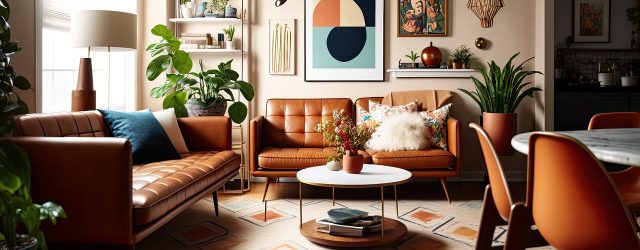The world of interior design is a captivating tapestry woven with threads of culture, history, and innovation. As we embark on a journey through time, delving into the intricacies of U.S. and U.K. interior design over the past century, we find ourselves in a realm where style evolves like a living organism, reflecting societal shifts and aesthetic trends.
In the United States, interior design has undergone a remarkable transformation from the grandeur of Victorian opulence to the sleek lines and minimalist elegance of contemporary spaces. Each era bears witness to a unique narrative etched in the walls and furniture choices that define American homes.
Across the pond in the United Kingdom, a parallel but distinct evolution unfolds as British interiors narrate their own story of refinement and sophistication. From the ornate detailing of Edwardian times to the modern fusion of traditional elements with contemporary flair seen in current British homes, each period leaves its mark on the canvas of interior design history.
Early 20th Century:
Influence of Art Deco movement in U.S.
In the early 20th century, the Art Deco movement left a lasting impression on U.S. interior design, marking a shift towards decadence and modernity. Influenced by industrialisation and new technologies, Art Deco embraced geometric shapes, vibrant colours, and luxurious materials like glass, chrome, and wood veneers. This style was all about showcasing wealth and sophistication through bold patterns, streamlined forms, and intricate detailing.
Art Deco interiors in the U.S. often featured symmetrical layouts, sleek furniture designs with curved silhouettes or sharp angles, and lavish textiles such as velvet and silk. The movement also incorporated motifs inspired by Egyptian art, Greco-Roman architecture, and Native American culture into its designs to create a sense of exoticism and glamour.
Emphasis on traditional styles in the U.K.
In the early 20th century, U.K. interior design was dominated by traditional styles that emphasised elegance and sophistication. The influence of Victorian and Edwardian eras could be seen in the rich use of dark woods, luxurious fabrics, and intricate detailing. Rooms were typically adorned with ornate furniture, heavy draperies, and decorative accessories such as vases and figurines.
Interior designers of this period focused on creating a sense of opulence and grandeur within homes, frequently incorporating elements like chandeliers, Persian rugs, and vintage paintings to enhance the overall aesthetic. While there was a nod to nostalgia for the past with antique-inspired pieces, there was also an embrace of modern conveniences such as electric lighting and streamlined furniture designs. The result was a fusion of old-world charm with contemporary functionality.
Continue Reading
